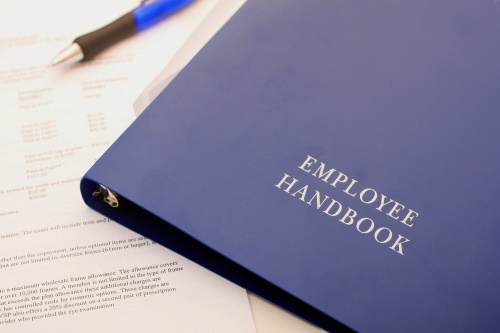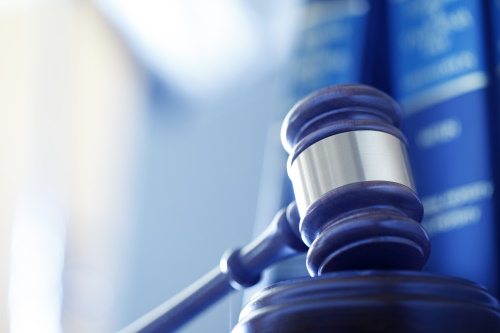When training new Tactical Flight Officers (TFOs) we describe foot pursuits as the lowest common denominator of all pursuit scenarios. Suspects on foot are much smaller and more maneuverable than cars, motorcycles and bicycles. They can easily see where we are, and if they’re familiar with the tactical environment, which they often are, they know the best places to hide, and where all the holes in the fences are.
As with all missions, safety of flight must be an aircrew’s highest priority, but depending on how foot pursuits are flown, aircrews may be exposed to excessive and unnecessary risks. Many years ago, it was common to fly nighttime foot pursuits relatively low – between 300 and 400 feet AGL or even lower. The technology and techniques that enabled aircrews to keep suspects in sight from higher altitudes were not refined enough to be effective. Pilots would spiral around running suspects at low altitudes in high-G turns while TFOs tried to illuminate them with a searchlight. The job got done, but the aircrew’s workload and their exposure to ground-based hazards was relatively high.
It’s embarrassing to admit, but in open areas, I was actually taught to herd fleeing suspects with the helicopter. We would descend to within 50 feet of the ground and then maneuver around them in a senseless attempt to block their path. “Risk Management” was the name of a division within the City; it certainly wasn’t a process WE used to evaluate, reduce and eliminate risk. Fortunately, we made it through that phase of our existence with no accidents, which is remarkable when you consider how vulnerable we were to power lines, fences, over-torques or even rocks that were thrown at us.
Years later, after acquiring new technology and experimenting with different ideas, we discovered that if the pilot could position the aircraft by referring to the FLIR display, and the TFO was a proficient FLIR operator, we could fly these and other missions much higher, and with a higher degree of success. Our exposure to ground-based hazards and our flyover noise were reduced, which enabled our ground units to hear the TFO better. That can be crucial to officer safety.
The most noticeable change, however, was the reduction in aircrew workload. We discovered that, when these techniques were understood, a proficient crew could loiter over a fleeing suspect in a gentle 50 to 60 knot orbit at 800 to 1000 feet AGL, while calmly updating ground units with the suspect’s actions. Low altitude foot pursuits were about to become a thing of the past – or so we thought.
The wide disparity in proficiency between FLIR operators was the first barrier we encountered. Some TFOs were skilled FLIR operators and could easily keep a suspect in sight while staying oriented. Others required some additional training, but they rose to the occasion. There was a small group, however, who rarely picked up the hand-controller. There was no way they were going to be able to control the FLIR well enough from 1000 feet AGL to keep a running suspect in sight, and they refused to practice.
This disparity in proficiency was problematic, because the techniques, technology and tactics used during higher altitude foot pursuits are, to a large degree, not interchangeable with lower altitude foot pursuits.
At 300 to 400 feet AGL, the position of the aircraft in relation to the suspect can change rapidly and significantly as they move in relation to each other. This is due to their close proximity. The lateral offset angles that develop, combined with whatever obstructions are present, make it easier for suspects to move behind obstructions, or move more easily from building to building without the aircrew being able to see them. The lower the aircraft gets, the worse this problem becomes. Urban environments are particularly bad, because there are plenty of structures for suspects to hide behind. We can reduce their ability to do this somewhat by flying faster, but then we often end up in a high-G, high-bank turn, as we spiral over the suspect’s head.
If the suspect and aircraft get too close to each other, which can happen quickly at lower altitudes, both crewmembers may lose sight the suspect behind, or beneath the aircraft. If we turn sharply to keep them in sight, we can easily find ourselves in an undesirable situation – downwind, low and slow, in a tight turn with a lot of pitch on the blades.
The second barrier we encountered was teaching old dogs new tricks. The tendency to fly lower during foot pursuits stems from the belief that one or both crewmembers must be able to see the suspect by looking outside the aircraft. Pilots obviously need to know where the suspect is so they can keep the aircraft positioned effectively, but the need for them to see the suspect outside is less important at higher altitudes. Teaching some of our senior pilots to fly differently, however, and convincing them to rely on their TFOs to keep suspects in sight with the FLIR, was a difficult hurdle to overcome. It became clear that unless management understood the benefits of flying higher, and then required everyone to learn and use those techniques, some would continue to fly low. In the end there was only one thing that stopped some of them from flying low – retirement. For several years, we had two completely different methods of performing nighttime foot pursuits, and the makeup of the aircrew determined which method would be used. So much for standardization.
Higher altitude foot pursuits pose their own challenges, but the safety and tactical benefits far outweigh the drawbacks. It’s not difficult to train pilots to fly via the FLIR display, but it does take an understanding of the concepts associated with aircraft positioning, and it takes practice. I have trained with agencies throughout the world – in airplanes and in helicopters, with civilian and sworn pilots, and from altitudes ranging from 800 to 7,500 feet AGL. The issues are identical. As long as the FLIR has the ability to provide the crew with an adequate view of the suspect from a given altitude, higher-altitude techniques are not difficult to learn.
The FLIR’s gimbal angles are important factors to understand. They not only indicate the aircraft’s distance from the suspect, but they also indicate whether the aircraft is moving toward or away from them. If the distance is too great, suspects will be able to move behind obstructions easier, and it will take longer for TFOs to reacquire them. If it’s insufficient, the orbits will be too tight and TFOs will have difficulty controlling the imager and remaining oriented. Pilots must be able to recognize when the aircraft is getting out of position, or if a suspect is about to run behind an obstruction. The TFO’s use of effective fields of view helps them do this. This is why it’s so important for pilots and TFOs to be on the same sheet of music.
When orbiting over fleeing suspects in urban environments, pilots should keep their orbits relatively tight (but not too tight), because we want to minimize the time suspects have to move behind obstructions. An effective orbit profile is to fly at about 50 to 60 knots, between 800 and 1000 feet AGL with about a 30 degree angle of bank (give or take a few degrees to adjust for obstructions and wind).
If pilots pay adequate attention to the display, and TFOs use effective fields of view, they’ll be able to see what the suspect is trying to do. Pilots can tighten up the turn if the suspect tries to run around the corner of a building, or they can reduce their angle of bank and slow somewhat to parallel the suspect’s path.
Another consideration is the pilot’s peripheral view. When pilots are looking 90 degrees to the left or right to keep a suspect in sight, their peripheral view of their instruments, caution lights and flight path is limited or non-existent. When positioning the aircraft via the FLIR display, however, those things are easier to see peripherally.
During a foot pursuit that occurred many years ago, our practice at the time was to use the FLIR during the vehicle pursuit, and then descend to a low altitude and illuminate suspects when they fled on foot. In this case, a vehicle pursuit was handed off from another aircraft. When the suspect fled on foot, our pilot descended to about 350 feet AGL, and was looking 90 degrees to the left to keep him in sight. The TFO was also looking to the left and was illuminating the suspect with the searchlight. For whatever reason the other law enforcement aircraft stayed in the area after handing off the pursuit. No crewmember in either aircraft saw the other aircraft until they passed within 60 feet of each other.
Beyond the obvious deficiencies in interagency communications, handoff procedures and mission prioritization (aviation safety), it’s clear that if both crewmembers had been viewing the FLIR display instead of looking to the left, they would likely have seen the other aircraft in their peripheral view long before it became a hazard. It was directly in front of them.
I sometimes hear concerns about pilots viewing the FLIR display, and how it might impact safety of flight. These concerns are always put to rest, however, when the concepts are understood and then experienced firsthand. Basically, pilots should view the FLIR display as they would any other display (GPS, LOJACK, Glide-Slope etc.). It should be part of their scan when it’s needed, and only be viewed when its use does not jeopardize safety of flight. Pilots should NOT be viewing the FLIR display, however, during low altitude foot pursuits. It’s very difficult to stay oriented, and it’s difficult for TFOs to control the imager when spiraling around a suspect at low altitudes. More importantly, there are too many ground-based hazards that can affect our safety.
Another thing to consider is the suspect’s mindset. The people we chase usually aren’t rocket scientists. They often have no real escape plan and they’re usually only thinking about getting away. They’re trying to outrun the officers behind them, or they’re trying to evade us (in that order). As rudimentary as their tactics may be, they will often be based on what we are doing – especially if an officer isn’t right behind them.
We’ve been recording our missions for 20 years, and with well over 2000 videotapes impounded, it wasn’t surprising to learn that a large portion of them involved foot pursuits. A time consuming objective analysis of those incidents helped us to shape our tactics to counter suspect tactics, and improve aviation safety. For example, we noticed that, when we flew higher, suspects usually stopped running and hid somewhere nearby, or they started walking instead of running if officers weren’t right on their heels. That’s exactly what we want them to do, because it turns a very dynamic situation into a more controlled one, which gives us more time to get our resources into place. The suspects know we’re there, because they can see and hear us, but they obviously don’t think we were watching them.
We also noticed that when suspects know we’re watching them, because we’re illuminating them with a searchlight, or spiraling around them at a low altitude, they typically keep running until they’re either caught or they escape. Essentially, they’re running from our light. There’s a time and a place to illuminate suspects, but illuminating them simply because they’re running is not always the best practice. In some cases, it actually helps them by illuminating their path, while pursuing officers have to run in the dark! Personally, I find it very satisfying – and somewhat entertaining – to see suspects trip and fall, and tumble down hillsides as they run in the darkness.
Fly safe.
Written by Kevin P. Means
Published in Vertical 911 (Emergency Services rotorcraft magazine), July 2011



